8 Famous Handicraft Villages of Vietnam
- Thu, 11/05/2017
- 36087 viewed
- 1 commented
The handicraft of Vietnam has such a unique feature. The name of the products always includes the name of the village that creates them. Those skillful products are also a pride of their village.
Many traditional handicraft villages have become so well-known through the history of this country. At these villages, there are so many skillful craftsmen that the whole village becomes a large manufacturing center. Moreover, each village has its own unique feature, which is impossible to mimic.
In the post, we will introduce you top 8 traditional handicraft villages of Vietnam, which are famous for their skillful and unique handicrafts.
Bat Trang Porcelain Village is a traditional pottery-making village, which is located in the Northern of the Red River, Bat Trang town, Gia Lam district, Ha Noi. The pottery here is made of a special kind of clay – the white clay.
The craftsmen only use their hands to knead the clay into the shape of the bowl, flower vase, etc. Then, they draw lively pictures or patterns on the products and glaze them. After that, these kneaded-clays will be put into the kiln for heating.

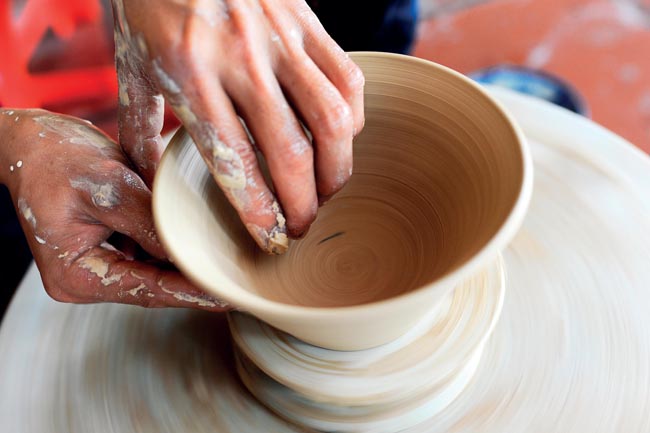
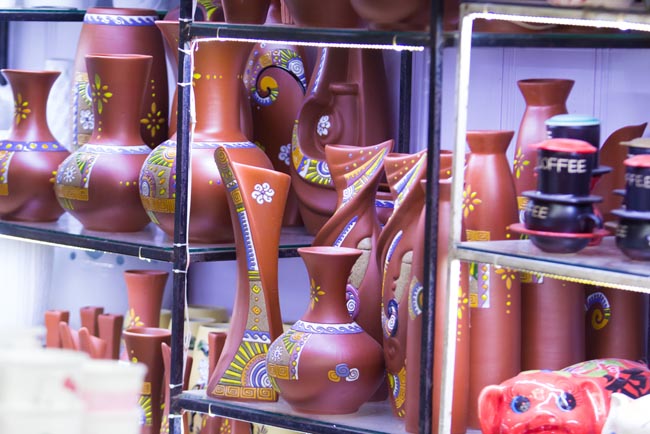
The pottery products of Bat Trang Porcelain Village are always famous for the skillfulness, subtleness and the diversity of product’s shapes such as small bowls, large bowls, flower vases, pots, thuribles, etc. Especially, all the handicrafts of this pottery-making village are waterproof and fade-resistant.
The glaze of Bat Trang is also very subtle and unique with the secret recipe, which is handed down from generation to generation. Those values have created such an irresistible attraction and appealing feature for Bat Trang village. This is the reason why this traditional handicraft village can attract so many tourists as well.
Located in Ha Dong, which is about 10 kilometers from the heart of Ha Noi Capital, the village near Nhue River bank fully reserves the unique features of a typical and traditional handicraft village.
On paying a visit to Van Phuc silk village, you can see the great banyan tree at the village’s gate, as well as many familiar images of traditional Vietnamese village such as the well, the large yard of the village’s temple, or the market held under the shade of the great banyan tree every afternoon. From the gate of Van Phuc silk village, we can hear the sound of the looms weaving the silk.
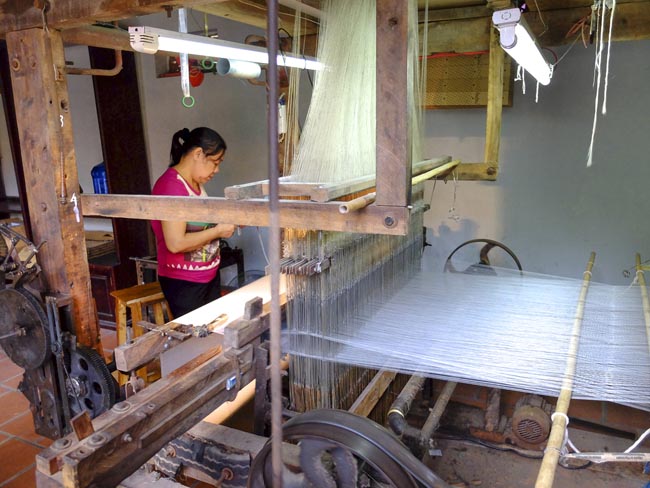
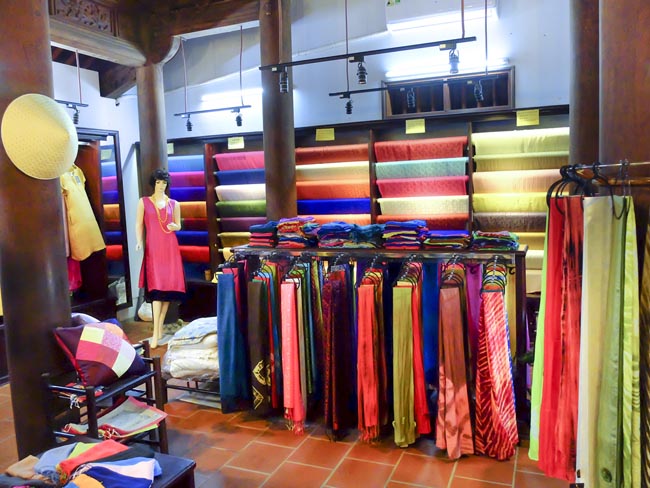
The silk of Van Phuc is famous for its smoothness, softness, and coolness. It is not only a favorable product in the country but also exported to many countries all over the world.
The pottery-making of Tho Ha village developed significantly in the 14th century. This is one of three ancient pottery centers of Vietnam, besides Phu Lang (Que Vo, Bac Ninh) and Bat Trang (Gia Lam, Ha Noi).
The pottery products of Tho Ha include rare features such as the high level of glazed terra-cotta, water resistance, the bell-like melody, the smoothness and warmth of brown-red glazed color. The pottery of this village is extremely durable, may be endless with the time, even though it is buried in the ground or soaked in the water for a long time.
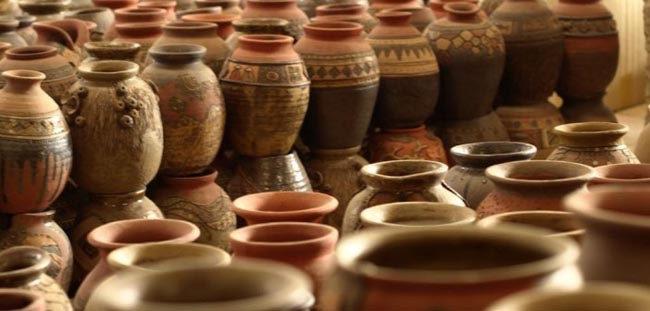
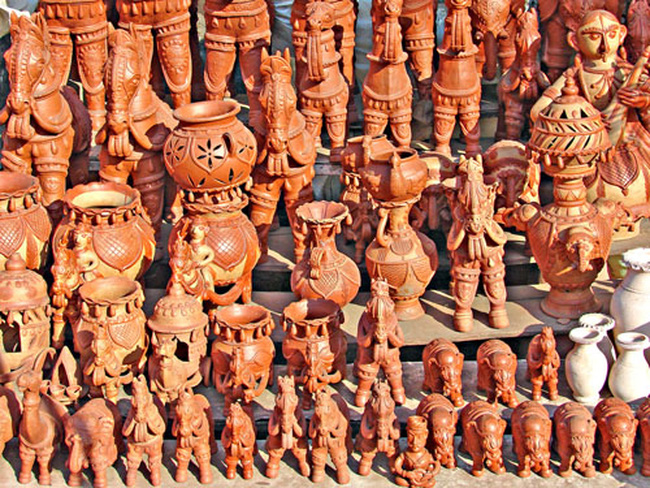
Tho Ha village mainly produces common pottery products as big jars, small jars, pots, etc. Nowadays, the ancient potteries, which come from this traditionally crafted village, are completely reserved and they remain as the living monuments for the skillfulness of the craftsmen here.
Dong Ho village is a famous painting-making village of Vietnam. Located in Dong Ho, Thuan Thanh district, Bac Ninh Province, this traditional painting village has a good reputation of making folk paintings, which is the ancient style of Vietnamese painting.
In the past, the village drew meaningful pictures to meet the need of the customers during the Lunar New Year festival. Nowadays, Dong Ho’s paintings are also drawn every day to serve the tourists’ requirements.
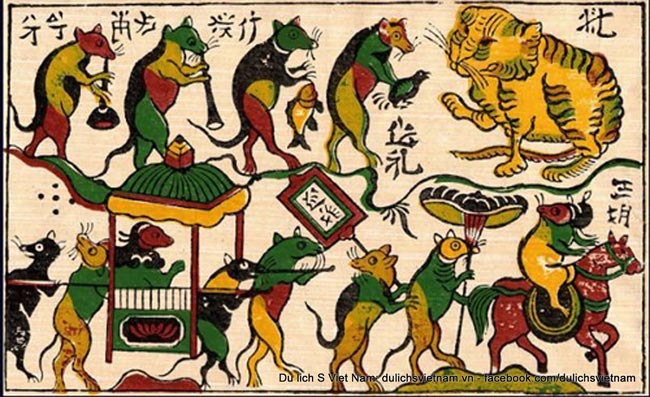
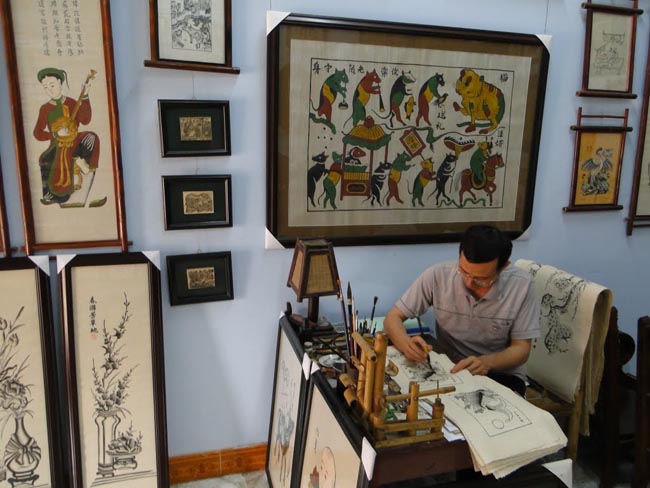
The raw materials used for a typical Dong Ho’s painting is a special kind of paper made from the bark of the Rhamnoneuron balansae, which is called “Giay do” or “Do Paper” and the colors for the picture are made from brick, leaves, or burnt roots. In order to create the sparkling look for the painting, the artists use the clam’s shells. After being heated in the kiln, the shells are broken and mixed with the resin. Then, the artists will cover a layer of this mixture on “Do paper” before painting.
Almost of Dong Ho paintings represent for the desire of peace, happiness, and prosperity. Because of this reason, these pictures are usually used in the Lunar New Year Festival.
The conical hats of Tay Ho are famous for their thinness, gentle color, the subtleness and the beauty in the sewing. Thanks to those factors, they are favorable products of many customers. The conical hat, for a long time, is a familiar feature of the Vietnamese. It not only serves as a kind of hat to protect the wearer from the bad weather, but also as an addition to the beauty of Vietnamese woman.
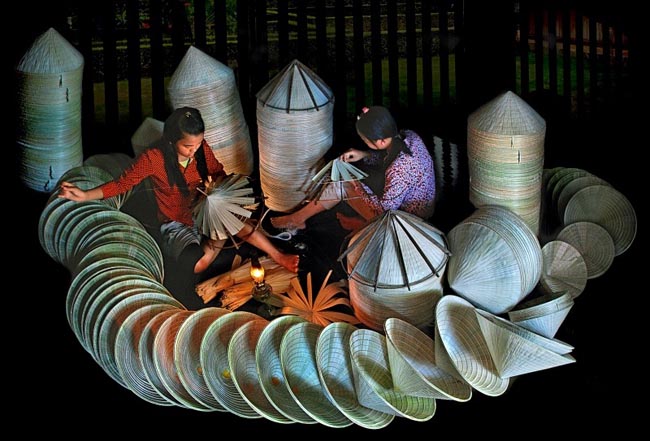
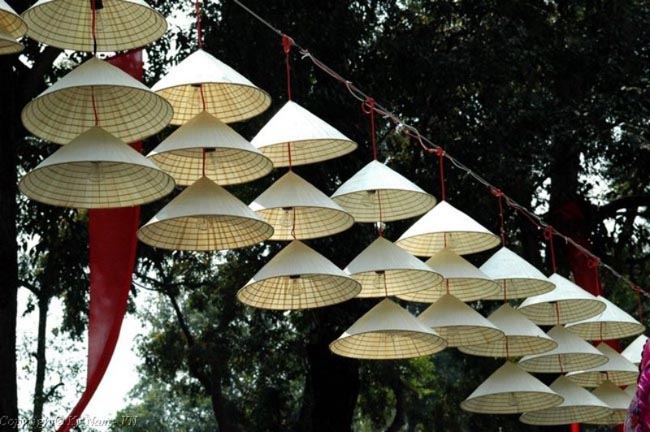
For a long period of time, the farmers, the merchandisers, and especially, the women wore the conical hats whenever they left their houses. Due to the strong connection with the daily life of Vietnamese people, the conical hat has naturally become a familiar “friend” of the native, regardless of time changing.
Not only does Tay Ho conical hat village have a good reputation of producing “Poem conical hat”, but the craftsmen here are also very skillful to create the two-layer-conical hats, which are very durable and beautiful, as well.
The uniqueness of this Cham weaving-making village is that the craftsmen still utilize the traditional weaving method to make brocade. Thanks to this, the brocade products can well preserve their ancient technique in every steps, materials and even the patterns.
On paying a visit to this traditional handicraft village, you will have the opportunities to observe the skillfulness of the craftsmen in weaving the brocade.
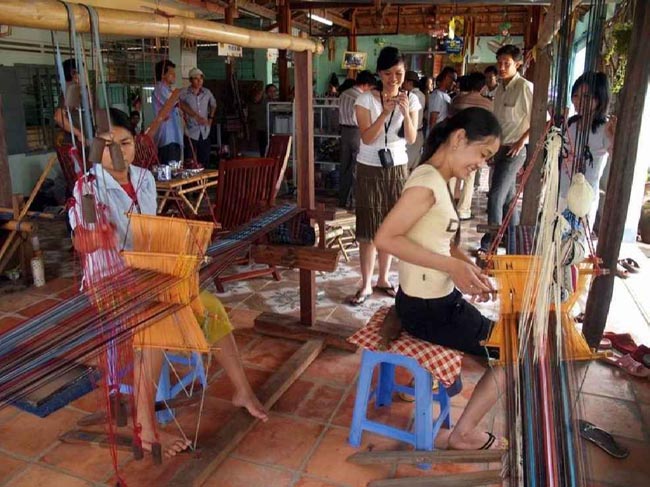
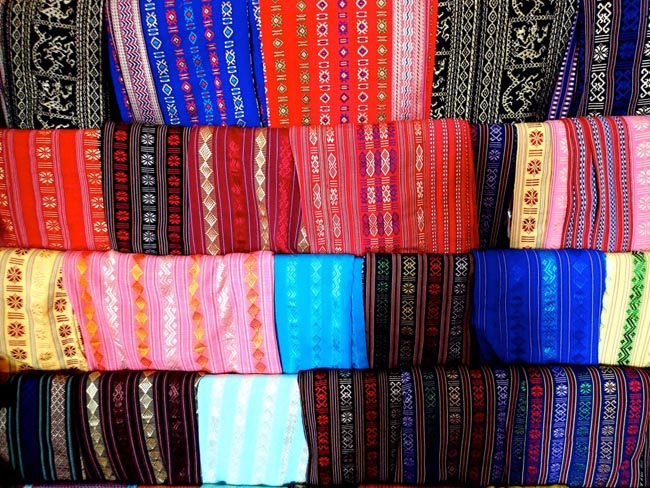
In recent years, the brocade products of My Nghiep – Chung My has been more and more various. In addition to scarfs, blankets, and clothes, the craftsmen also weave the cravats, wallets, bags, etc. to meet the need of the tourists, especially for those who want to buy some souvenirs for their friends and families on traveling to Ninh Thuan.
The brocade weaving of Chau Giang village is a unique and traditional feature of the Cham people. The brocade products of this handicraft village include not only the traditional beauty of brocade but also the uniqueness of Cham’s culture.
With the attractive style and the diversity of products, such as scarfs, hats, jackets, or sarongs, Chau Giang village is a must-visit destination in An Giang, especially, for those who love brocade products.
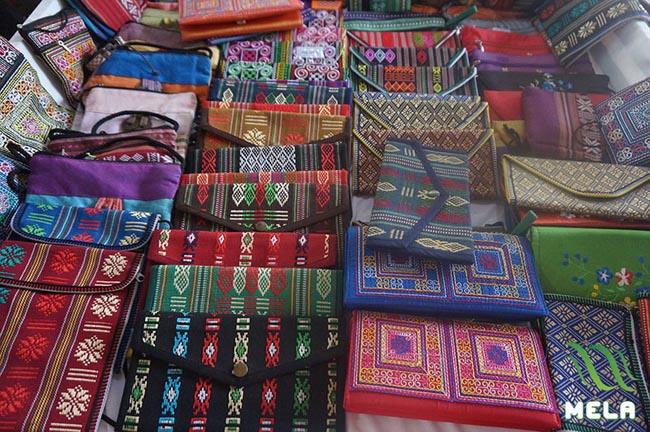
The most famous lacquer village of Binh Duong is Tuong Binh Hiep village, which is about 7 kilometers to the North from Thu Dau Mot City. On visiting this handicraft village, you will have the chance to observe every step of the traditional Vietnamese lacquering.
Just as a large manufacturer of lacquer products, there are over hundreds of families doing the same works. There are some families, which are only responsible for certain steps of manufacturing.
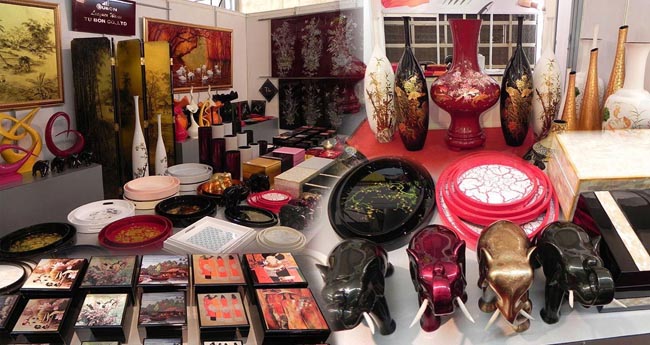
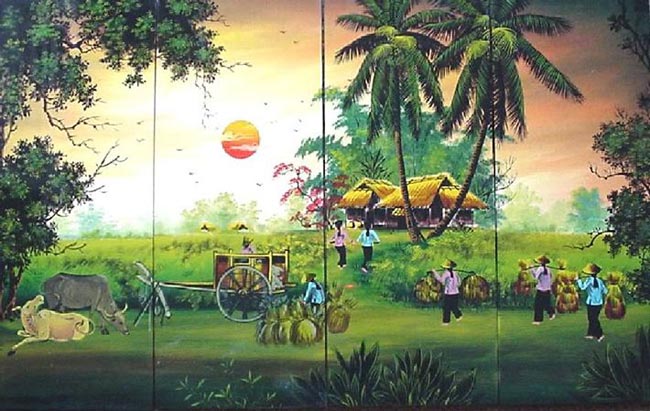
As can be seen, the lacquer manufacturing of Tuong Binh Hiep village has been industrialized with detailed line system, however, it still remains the unique style of each family, which is a major style of the Asia. The lacquer finishes of Tuong Binh Hiep village are loved by many locals and even foreigners all over the world.
Many traditional handicraft villages have become so well-known through the history of this country. At these villages, there are so many skillful craftsmen that the whole village becomes a large manufacturing center. Moreover, each village has its own unique feature, which is impossible to mimic.
In the post, we will introduce you top 8 traditional handicraft villages of Vietnam, which are famous for their skillful and unique handicrafts.
1. Pottery-making village - Bat Trang Porcelain village (Ha Noi)
Bat Trang Porcelain Village is a traditional pottery-making village, which is located in the Northern of the Red River, Bat Trang town, Gia Lam district, Ha Noi. The pottery here is made of a special kind of clay – the white clay.The craftsmen only use their hands to knead the clay into the shape of the bowl, flower vase, etc. Then, they draw lively pictures or patterns on the products and glaze them. After that, these kneaded-clays will be put into the kiln for heating.



The pottery products of Bat Trang Porcelain Village are always famous for the skillfulness, subtleness and the diversity of product’s shapes such as small bowls, large bowls, flower vases, pots, thuribles, etc. Especially, all the handicrafts of this pottery-making village are waterproof and fade-resistant.
The glaze of Bat Trang is also very subtle and unique with the secret recipe, which is handed down from generation to generation. Those values have created such an irresistible attraction and appealing feature for Bat Trang village. This is the reason why this traditional handicraft village can attract so many tourists as well.
2. Weaving-making village – Van Phuc silk village (Ha Dong – Ha Noi)
Located in Ha Dong, which is about 10 kilometers from the heart of Ha Noi Capital, the village near Nhue River bank fully reserves the unique features of a typical and traditional handicraft village.On paying a visit to Van Phuc silk village, you can see the great banyan tree at the village’s gate, as well as many familiar images of traditional Vietnamese village such as the well, the large yard of the village’s temple, or the market held under the shade of the great banyan tree every afternoon. From the gate of Van Phuc silk village, we can hear the sound of the looms weaving the silk.


The silk of Van Phuc is famous for its smoothness, softness, and coolness. It is not only a favorable product in the country but also exported to many countries all over the world.
3. Pottery-making village – Tho Ha village (Bac Giang)
The pottery-making of Tho Ha village developed significantly in the 14th century. This is one of three ancient pottery centers of Vietnam, besides Phu Lang (Que Vo, Bac Ninh) and Bat Trang (Gia Lam, Ha Noi).The pottery products of Tho Ha include rare features such as the high level of glazed terra-cotta, water resistance, the bell-like melody, the smoothness and warmth of brown-red glazed color. The pottery of this village is extremely durable, may be endless with the time, even though it is buried in the ground or soaked in the water for a long time.


Tho Ha village mainly produces common pottery products as big jars, small jars, pots, etc. Nowadays, the ancient potteries, which come from this traditionally crafted village, are completely reserved and they remain as the living monuments for the skillfulness of the craftsmen here.
4. Painting-making village – Dong Ho painting village (Bac Ninh)
Dong Ho village is a famous painting-making village of Vietnam. Located in Dong Ho, Thuan Thanh district, Bac Ninh Province, this traditional painting village has a good reputation of making folk paintings, which is the ancient style of Vietnamese painting.In the past, the village drew meaningful pictures to meet the need of the customers during the Lunar New Year festival. Nowadays, Dong Ho’s paintings are also drawn every day to serve the tourists’ requirements.


The raw materials used for a typical Dong Ho’s painting is a special kind of paper made from the bark of the Rhamnoneuron balansae, which is called “Giay do” or “Do Paper” and the colors for the picture are made from brick, leaves, or burnt roots. In order to create the sparkling look for the painting, the artists use the clam’s shells. After being heated in the kiln, the shells are broken and mixed with the resin. Then, the artists will cover a layer of this mixture on “Do paper” before painting.
Almost of Dong Ho paintings represent for the desire of peace, happiness, and prosperity. Because of this reason, these pictures are usually used in the Lunar New Year Festival.
5. Conical-hat-making village – Tay Ho – Phu Vang conical hat village (Hue)
The conical hats of Tay Ho are famous for their thinness, gentle color, the subtleness and the beauty in the sewing. Thanks to those factors, they are favorable products of many customers. The conical hat, for a long time, is a familiar feature of the Vietnamese. It not only serves as a kind of hat to protect the wearer from the bad weather, but also as an addition to the beauty of Vietnamese woman.

For a long period of time, the farmers, the merchandisers, and especially, the women wore the conical hats whenever they left their houses. Due to the strong connection with the daily life of Vietnamese people, the conical hat has naturally become a familiar “friend” of the native, regardless of time changing.
Not only does Tay Ho conical hat village have a good reputation of producing “Poem conical hat”, but the craftsmen here are also very skillful to create the two-layer-conical hats, which are very durable and beautiful, as well.
6. Cham brocade Weaving-making village – My Nghiep - Chung My village, (Ninh Thuan)
The uniqueness of this Cham weaving-making village is that the craftsmen still utilize the traditional weaving method to make brocade. Thanks to this, the brocade products can well preserve their ancient technique in every steps, materials and even the patterns.On paying a visit to this traditional handicraft village, you will have the opportunities to observe the skillfulness of the craftsmen in weaving the brocade.


In recent years, the brocade products of My Nghiep – Chung My has been more and more various. In addition to scarfs, blankets, and clothes, the craftsmen also weave the cravats, wallets, bags, etc. to meet the need of the tourists, especially for those who want to buy some souvenirs for their friends and families on traveling to Ninh Thuan.
7. Brocade Weaving-making village – Chau Giang village (An Giang)
The brocade weaving of Chau Giang village is a unique and traditional feature of the Cham people. The brocade products of this handicraft village include not only the traditional beauty of brocade but also the uniqueness of Cham’s culture.With the attractive style and the diversity of products, such as scarfs, hats, jackets, or sarongs, Chau Giang village is a must-visit destination in An Giang, especially, for those who love brocade products.

8. Lacquer village – Tuong Binh Hiep village, Binh Duong
The most famous lacquer village of Binh Duong is Tuong Binh Hiep village, which is about 7 kilometers to the North from Thu Dau Mot City. On visiting this handicraft village, you will have the chance to observe every step of the traditional Vietnamese lacquering.Just as a large manufacturer of lacquer products, there are over hundreds of families doing the same works. There are some families, which are only responsible for certain steps of manufacturing.


As can be seen, the lacquer manufacturing of Tuong Binh Hiep village has been industrialized with detailed line system, however, it still remains the unique style of each family, which is a major style of the Asia. The lacquer finishes of Tuong Binh Hiep village are loved by many locals and even foreigners all over the world.
Comment
Name:
Email:
Enter code confirmation number inside under:

Your comments:
Send
Other news
- Top 5 famous Temples in Vietnam
- Tips for traveling to Vietnam
- Top 5 most ideal relaxing destinations in Vietnam
- Top Well-Known and Beautiful Islands in Vietnam
- Best specialty foods in Vietnam you should Try Once in a Lifetime
- Top 5 largest and most beautiful Caves in Vietnam
- Top mountains to conquer in Vietnam
- Chill out at one of the Top Gorgeous Beaches in Vietnam
- Top 20 Best places to visit in Vietnam
- 10 Secrets for The Perfect Picnic
- Top 6 Pagodas in Hue City
- 7 Most Famous Tombs You Should Visit When Coming To Hue
- Halong Bay Travel Guide - Top Things To Do
- Hue Imperial City in Vietnam
- Tips for Travelling to Vinpearl Land 1 day in Nha Trang
- Best Street Food You Should Not Miss When Visiting Hoi An
- Things to do in An Giang Province - Top Attractions
- Saigon Central Mosque - How to visit here?
- Discover Nha Trang Holy Places (Pagoda, Church)
- Things to Do in Sapa - Top Attractions


 Shopping Cart
Shopping Cart Checkout
Checkout